Northwest Territories wellhead installation highlights Stream-Flo service capabilities
It’s cold when you get to the End of the Road. Minus 62 Celsius with the wind chill in winter, cold.
But that’s what comes with the territory when completing a service job near Tuktoyaktuk, N.W.T.
Just ask Shawn Conger. The Stream-Flo Level 3 Service Technician has been there twice in the past few months.
“I didn’t even know what to expect when I got up there,” said Conger about his first trip. “I was like ‘Oh man, we’re going to see polar bears and all this other cool stuff’, but no. When they took us to the Arctic Ocean I thought this is going to be pretty cool and you look out and it’s like, oh, well, it’s winter time and there’s no trees, it’s just kind of like looking at Saskatchewan to be honest…flat and blowing snow.”
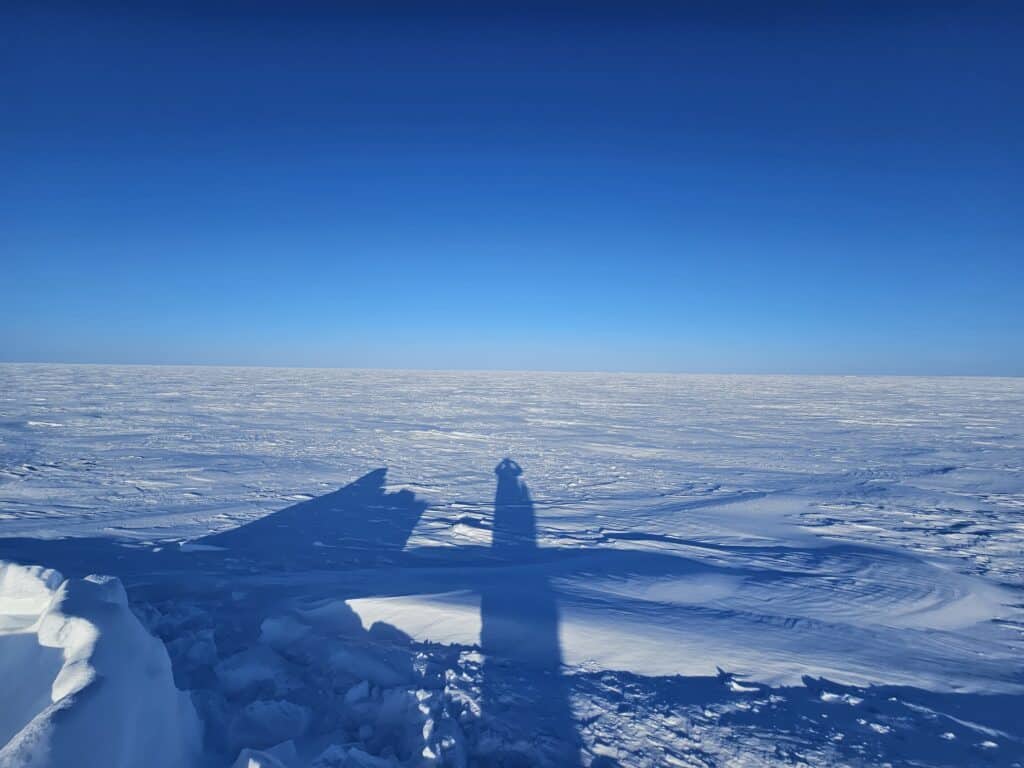
The Arctic Ocean as seen by Shawn Conger.
A ‘warm’ welcome
Conger, along with Stream-Flo Service Technician Colton Witwicky, were in Tuktoyaktuk, or Tuk as it’s known locally, to install the new spools and tubing head for a natural gas well. One that has the potential to provide the remote region with enough energy to last, by some conservative estimates, at least 50 years. Maybe 100, if you side with the more optimistic outlooks.
Lucky for Conger, the Arctic got a lot more interesting as his stint up there went by, especially when he got the chance to interact with some of the locals.
“Everybody was just absolutely ecstatic that we were up there and getting that well online, because it’s going to create a lot of jobs,” said Conger. “Everybody was really welcoming, I went to the grocery store just to check things out and the lady there asked if I was one of the professionals they hired from Alberta.”
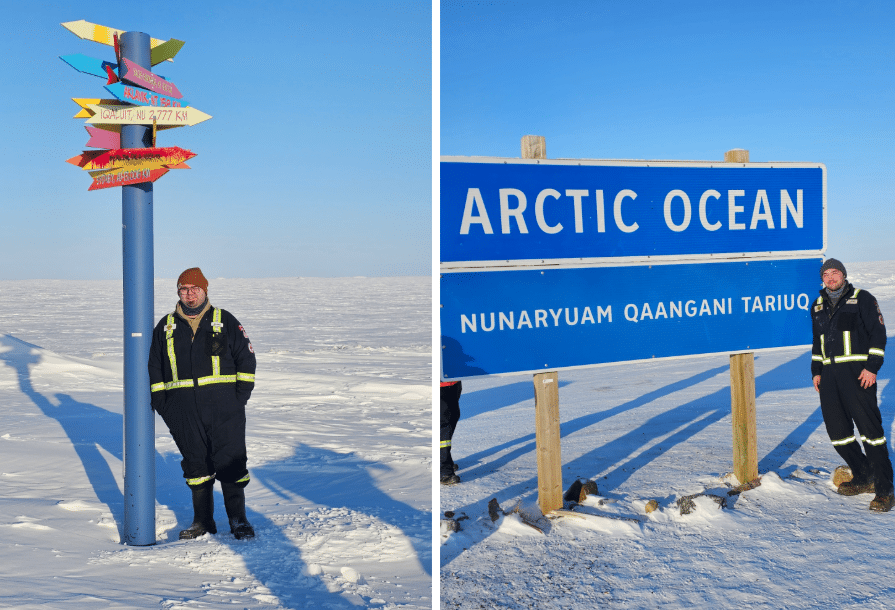
Two of the professionals from Alberta, Stream-Flo Level 3 Service Technician Shawn Conger, left, and Stream-Flo Service Technician Colton Witwicky, right, pose with a pair of the iconic signs near Tuktoyaktuk.
Enabling energy security
Billed as an important project for energy security in the region and the Inuvialuit people who have called it home for thousands of years, work has begun to ramp up in the area after a permanent all-season access road to the well was recently finished. There are plans to build a plant around the well, liquefy the extracted gas, then truck it to Inuvik and other Delta Beaufort communities.
Stream-Flo’s history with the well dates back to its very beginning, when Devon Energy and Petro-Canada first drilled it at the turn of the century. Indeed, Conger and Witwicky’s first job was to remove our old tubing head on the well that had since been abandoned.
That new permanent access road? It complicated things.
“By the time they did all the dirt work and building up and the engineering side of things, it (the road) was about 18 feet above where the well originally was,” said Conger. “So they put a big culvert around it and then the idea was just to install the spools and the new tubing head to be closer to ground level, instead of down in a crater.”
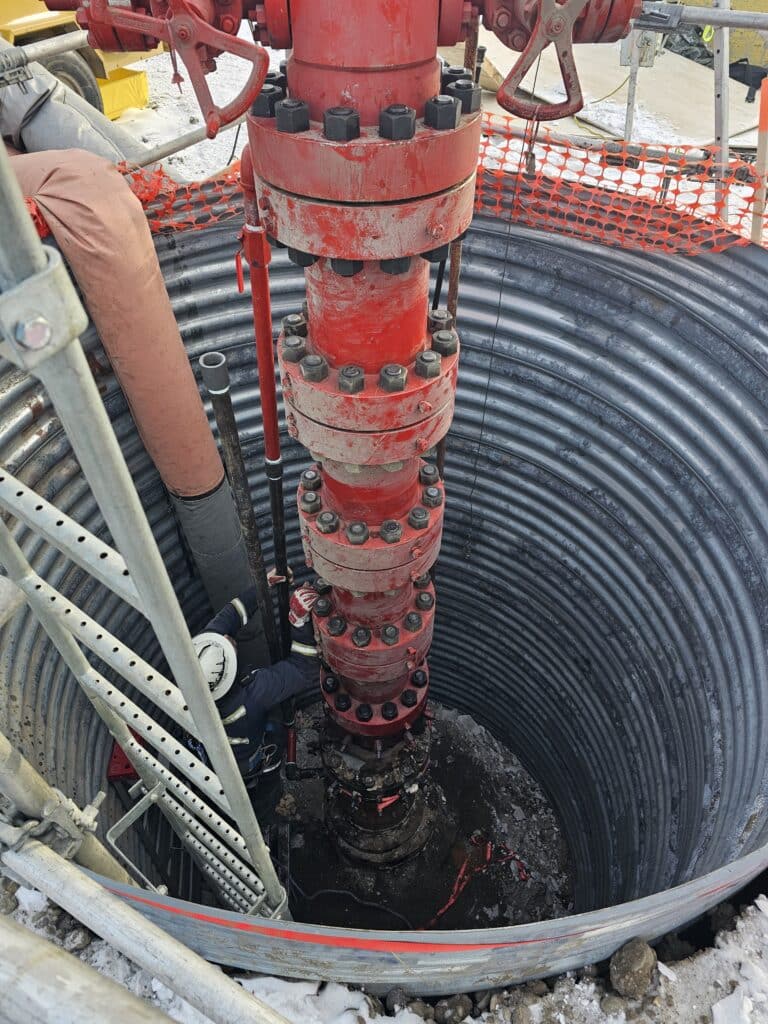
A tester installs a glycol injection line extension down in the cellar of the well near Tuktoyaktuk.
That crater, or cellar, had heaters running through it. Making for some more fun as Conger and Witwicky would have to strip down a few layers before entering, after bundling up to contend with the Arctic conditions above.
But everything, including Conger’s second trip solo to land the tubing hanger and top section, went according to plan.
“She’s flowing now,” said Conger. “No issues.”
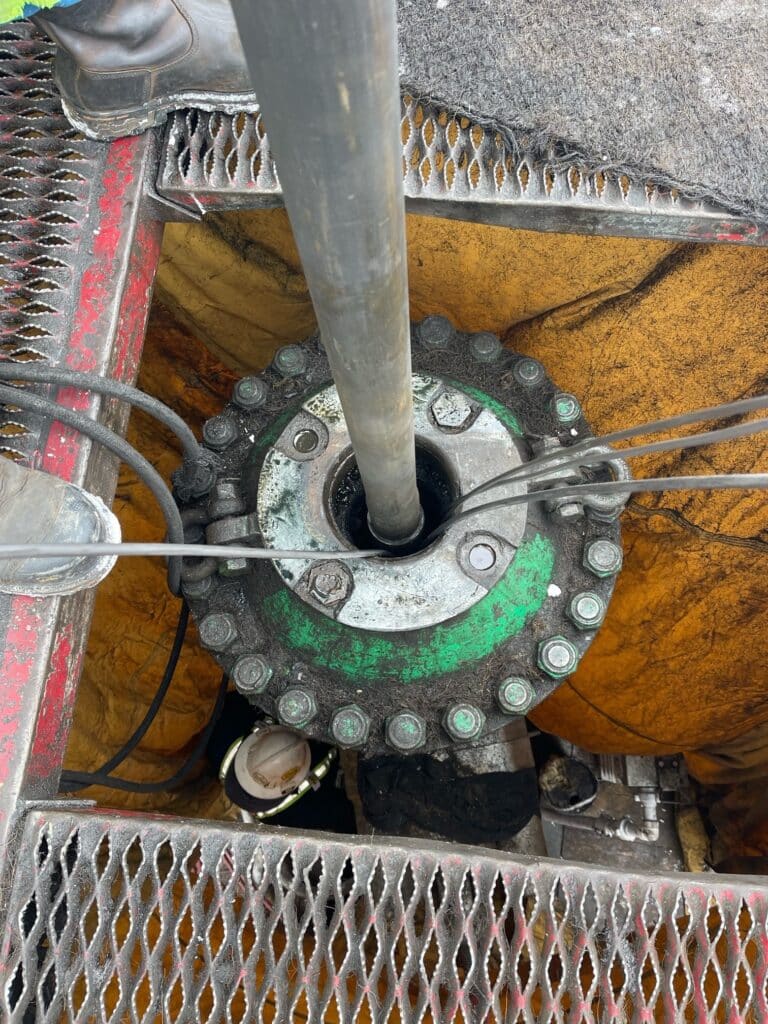
Shawn Conger engaging lockdowns after landing the hanger.
Plan A, B, and C
Over 3,000 kilometres away, Stream-Flo Domestic Wellhead Service Manager Ryan Doye and his exhaustive planning in the months leading up to the service call, are a big reason why the whole project went as smooth as it did.
“Working remote like that is a different thing,” said Doye, who speaks from experience. “Nothing can happen within hours, it takes days when something does go wrong, so you always have to have a plan A, B, and C in your back pocket.”
That means contingency plans require contingency plans of their own, says Doye.
“It’s quite a bit of a process preparing for remote work like this, between logistics etc.,” said Doye about the mapping and planning aspect. “You start with a small to-do list and by the time you’re done it ends up consisting of two crates of tools and spare parts.”
Given the 20-foot cellar and concerns over the techs working so far down, Doye ended up bolting all the spools together in one piece before shipping them. It would take the picker truck four days to complete the 3,376 kilometre trek. But before that trip could even happen, weather conditions kept wreaking havoc on the scheduling process.

Prior to shipping, Doye bolted all the spools together so time in the cellar would be reduced.
An exciting project
“The week prior to them MOB-ing up there they had a snowfall and it took nine days to clear the road because they had so much snow,” recalled Doye. “It’s pretty much been two months of just back and forth and moving flights around and all kind of good things.”
Needless to say, Doye is pretty happy things have wrapped up and went as smoothly as they did.
“As far as our side of stuff, everything was absolutely flawless,” said Doye. “I was amazed it executed as well as it did being we were planning on MOB-ing stuff a month prior.”
For both Doye and Conger, adding to the satisfaction of a job well done, was the unique customer and cause their efforts supported, and excitement from the Inuvialuit people and communities it will one day make life easier for.
“It’s interesting and it actually feels really good to be a part of this project,” said Doye, adding the townspeople were all aware of Stream-Flo’s presence and assistance in getting the well back online, as Conger’s earlier interaction in the grocery store — where a case of water will run you $70 and Ski-Doos are also available for purchase while you browse through your mail and pick up your prescription — helped highlight.
When all was said and done and the BPV was set in place, ready to be removed once the plant is finished in 2026 or 2027, reaching the End of the Road, where the Inuvik-Tuk Highway terminates at the Arctic Ocean, and seeing its sign, ended up being Conger’s favourite part of the whole trip.

The Trans Canada Trail monument which marks the End of the Road right before the Arctic Coast.
“I never thought in my lifetime I’d ever have any reason to go up there,” said Conger. “But here we are, we got our big red wellhead stuck up in the sky.”
And the Inuvialuit people in the area, are one major step closer to achieving energy security as a result.
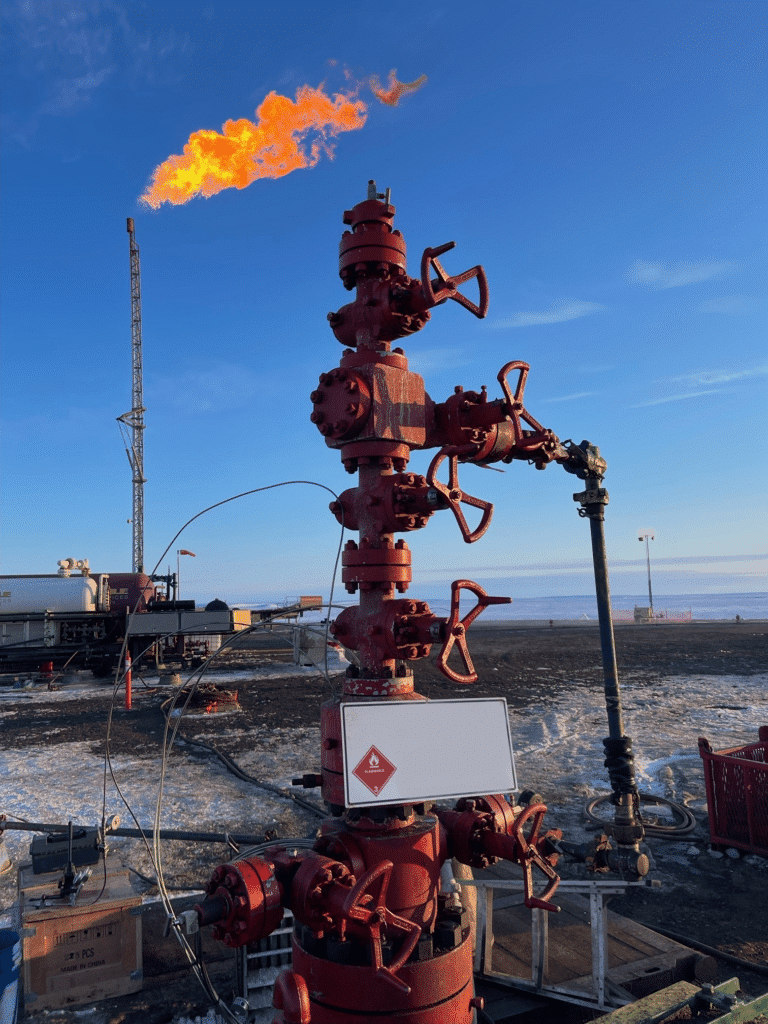
When finished, the project is projected to supply enough liquified natural gas to meet the energy needs of the remote region for at least 50 years.
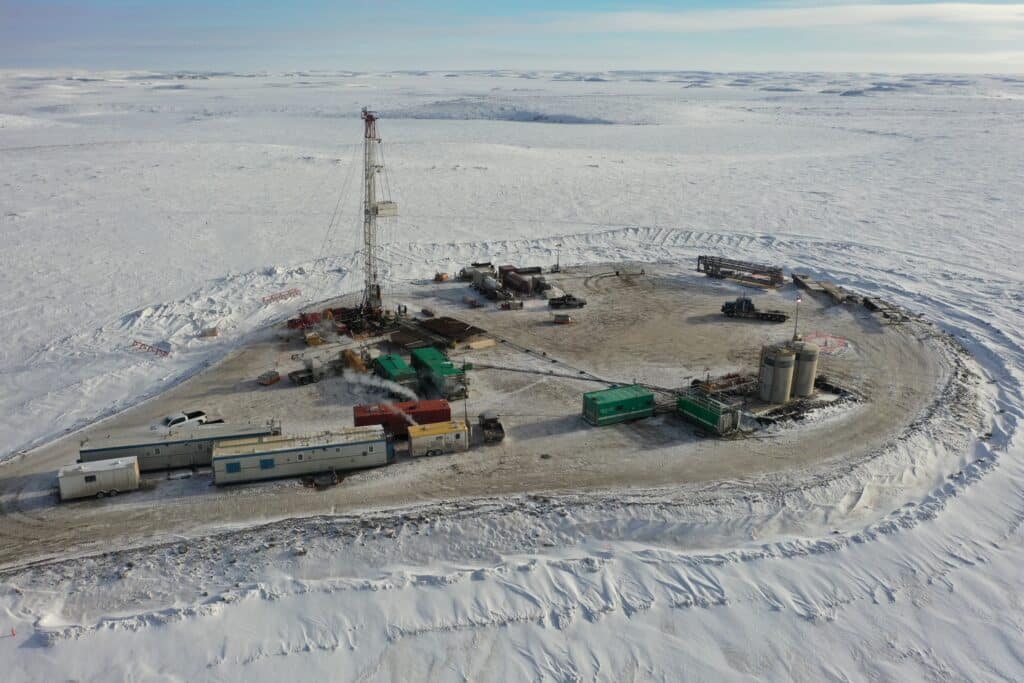
Aerial view of the well site.

The Arctic sun sets on a job well done.
